After dribbling towards the top of Bayer Leverkusen’s 18-yard box, Christian Pulisic hit a pass to the opposite side of the penalty area. The ball reached his fellow winger in open space thanks to a slip by the opposing full back, and, after one smooth, controlling touch with the left foot, Jadon Sancho curled a shot with his right foot around the keeper and into the inner side of the net to become the youngest English player ever to score in the German top flight.
Since his first goal, Jadon Sancho has lit up the Bundesliga with his flashy, energy-filled style of play. This season, the wide man leads the league in assists despite only starting five matches, and leads his club, Borussia Dortmund, in key passes per 90 minutes. He recently scored his first Champions League goal a mere four minutes into his substitution against the famously-stout Atlético Madrid. So just how has this 18-year-old suddenly become a significant playmaker for his side? The answer begins back at his home in the south of London.
Jadon Sancho’s Humble Beginnings
His story has an aura similar to France’s prodigious star Kylian Mbappé; a kid, growing up in a dangerous area of the biggest city in the country, who fell in love with the ball at his feet. Born to parents from the South American island nation of Trinidad and Tobago, a young Jadon Sancho began playing football at an early age. Though it didn’t start at a major club or academy; it started when he was playing on the streets of Camberwell, a district of South London. Sancho’s U-15/U-16 coach Dan Micciche, in an interview with The Guardian, puts it bluntly. “Jadon did a lot of his learning on the street through informal play. People think academies produce these players- they don’t. They do a lot of things: they support, develop, nurture. But they inherit 90%, 95% of the player, even when they join at nine. It’s about the other five, 10% that can be crucial, as the player is either completed or the 90 shattered”. This street football style of player is something scouts would expect to find in the favelas of Rio de Janeiro; it’s not a common mould coached out of the boroughs of London.
After eventually joining Watford’s academy, Sancho moved to Manchester City. Playing at one of the most elite academies in the country, he soon found ample playing time hard to come by. So in 2017, after reaching the Final of the European U-17 Championship (not to mention winning the Golden Player Award of the tournament) but before winning the U-17 World Cup, Sancho made a rare, extraordinary decision to move to a football club 428 miles away, in North Rhine-Westphalia, Germany.
The last couple seasons for Borussia Dortmund have been inconsistent if not concerning. After defeating Eintracht Frankfurt in the 2016-17 DFB-Pokal Final, the club placed fourth in the Bundesliga in 2017-18 after winning only one of their final five league matches and failed to advance out of a tough Champions League group that included Real Madrid and Tottenham Hotspur.
Fast forward to today and Dortmund has just recently defeated rivals Bayern Munich, is undefeated in the league this season with a four-point lead at the top of the table, and is tied at the top of their Champions League group. While this flying start has been a collective effort, Sancho has been a crucial cog in the club’s run. In order to understand the keys to Sancho’s early-season success, one first must understand the sound, sturdy tactics in manager Lucien Favre’s system.
The Tactics of Lucien Favre
If only one word was allowed to describe Favre’s system, it would be structured. He utilizes possessive, positional tactics, building possession up from the back patiently beginning with the centre backs and letting space open up ahead for full backs, deep midfielders, or wingers to run or pass into.
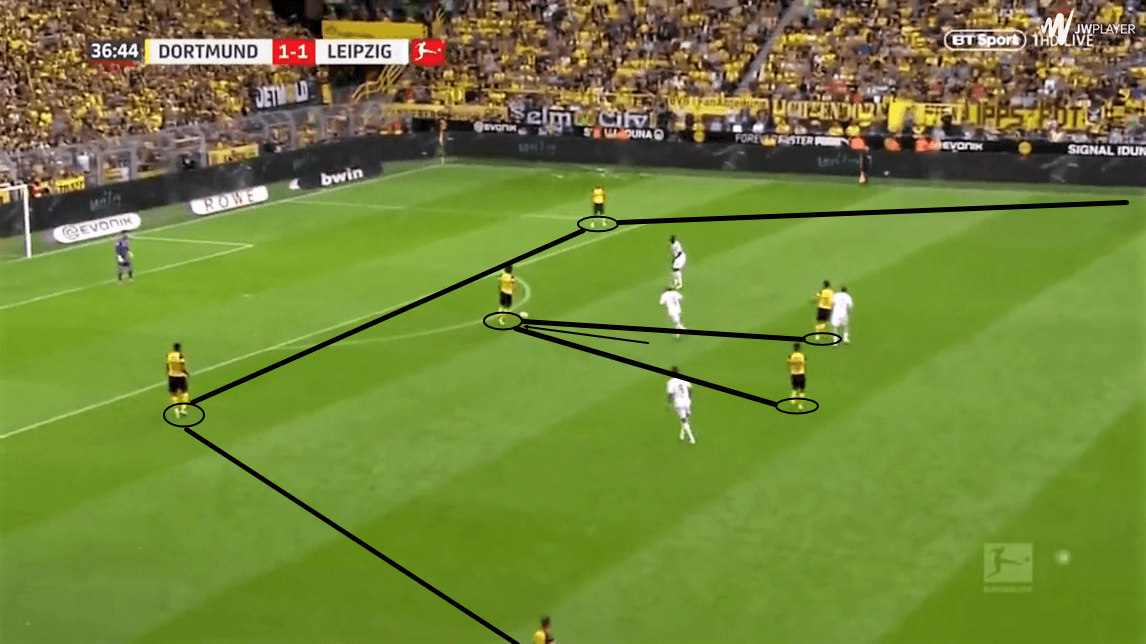
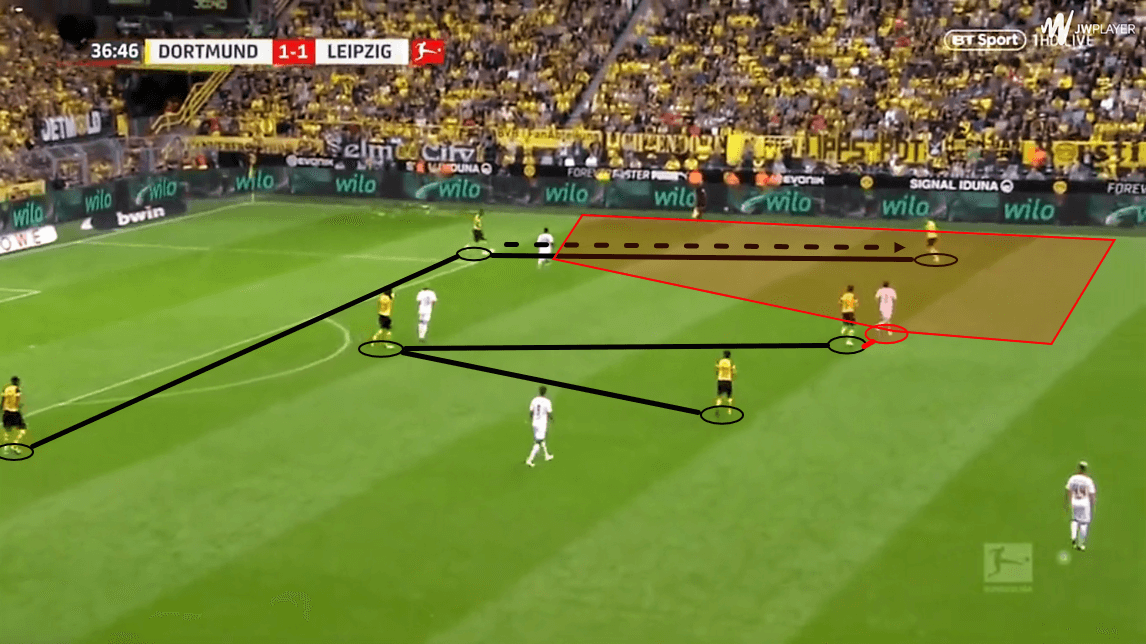
By letting the opponent focus on the ball, Dortmund allows space to open up to progress the ball. There is a sense of patience when the opposition doesn’t press, as the defenders take their time to scan the pitch in front of them before either cycling the ball around or attempting a pass forward.
Yet when the opponent does press, Favre’s tactic remains the same.
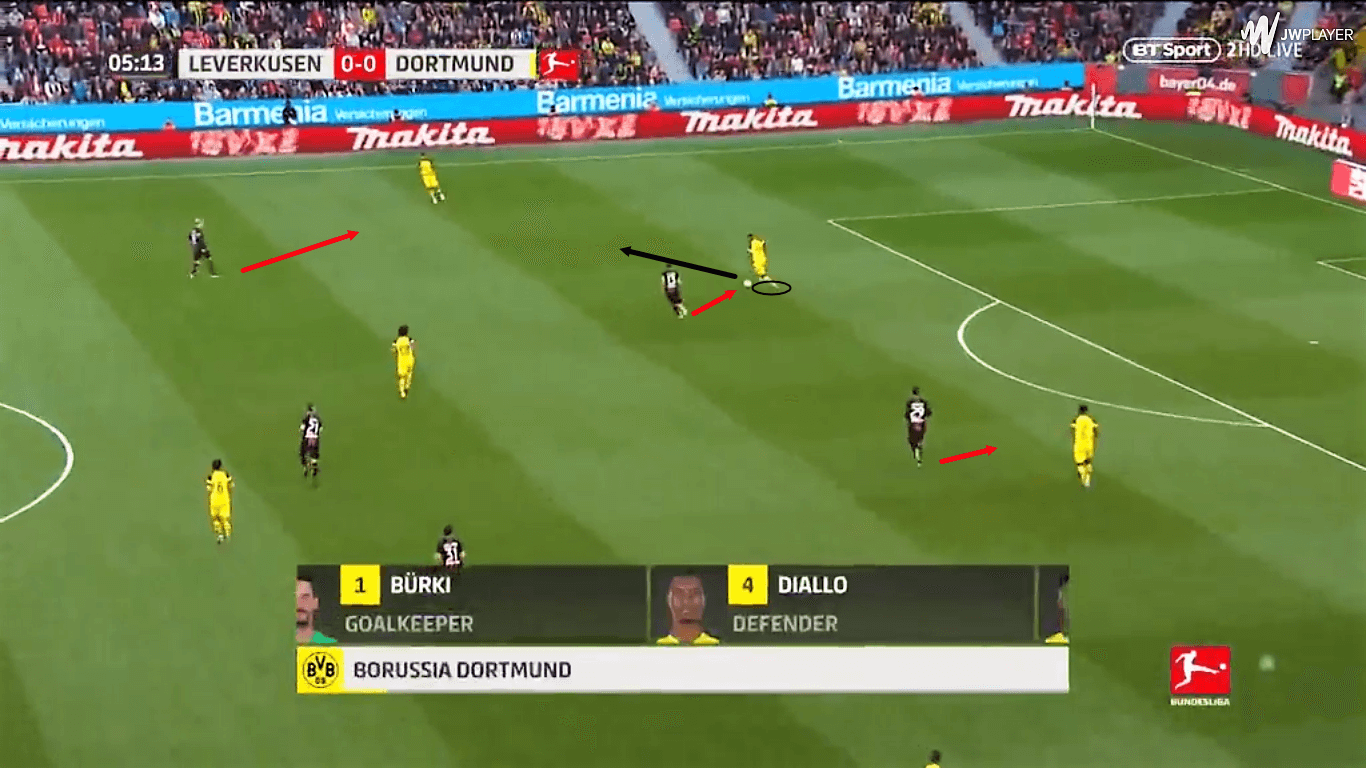
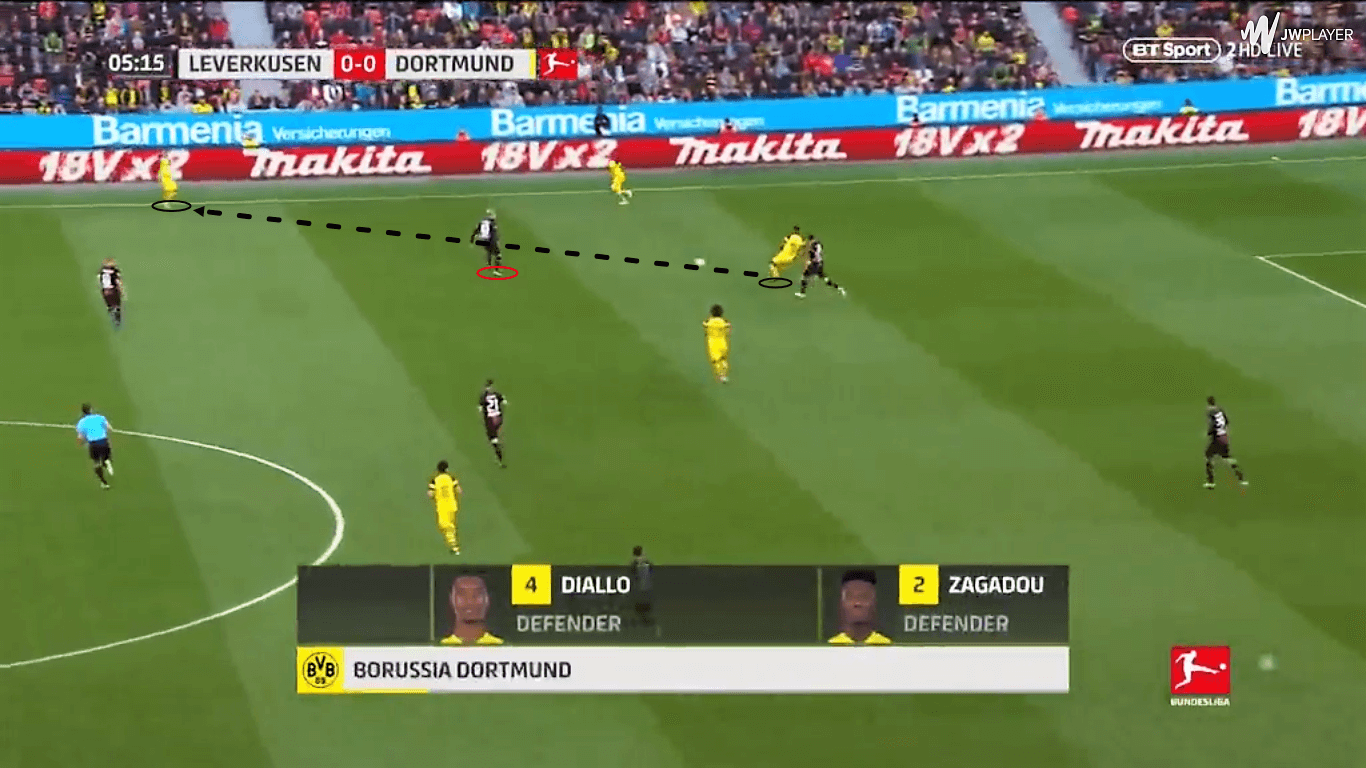
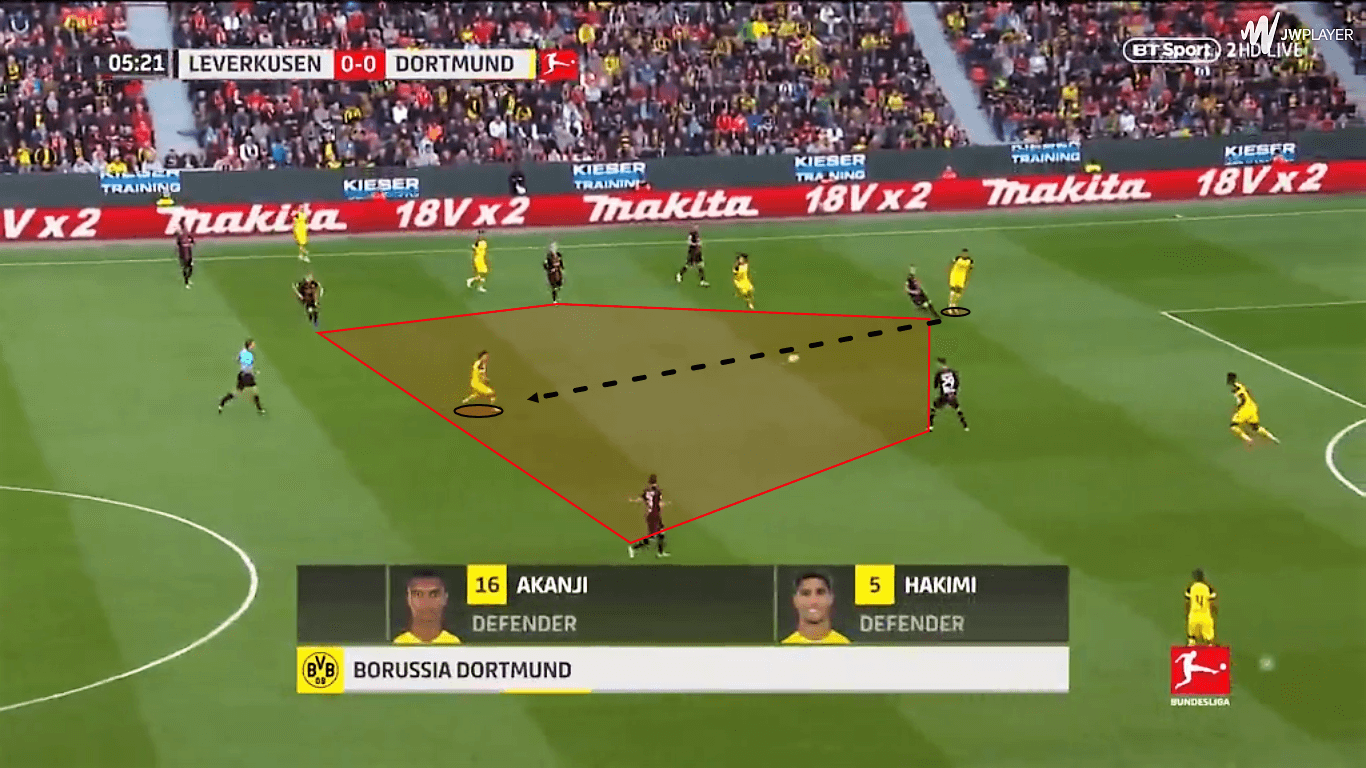
Some may consider this conservative possession style as “safe”, but sometimes safe is the solution. The plan that manager Didier Deschamps installed for France at the World Cup is a case in point; he mostly deployed a very controlled, organized 4-2-3-1, including utilizing the defensive-minded Blaise Matuidi as the wide left midfielder. This move was criticized, but it became an important part in Les Bleus lifting their second World Cup trophy.
Knowing how the possession cycling works in Favre’s structure is important because it shows how Dortmund can open up space for Jadon Sancho going forward.
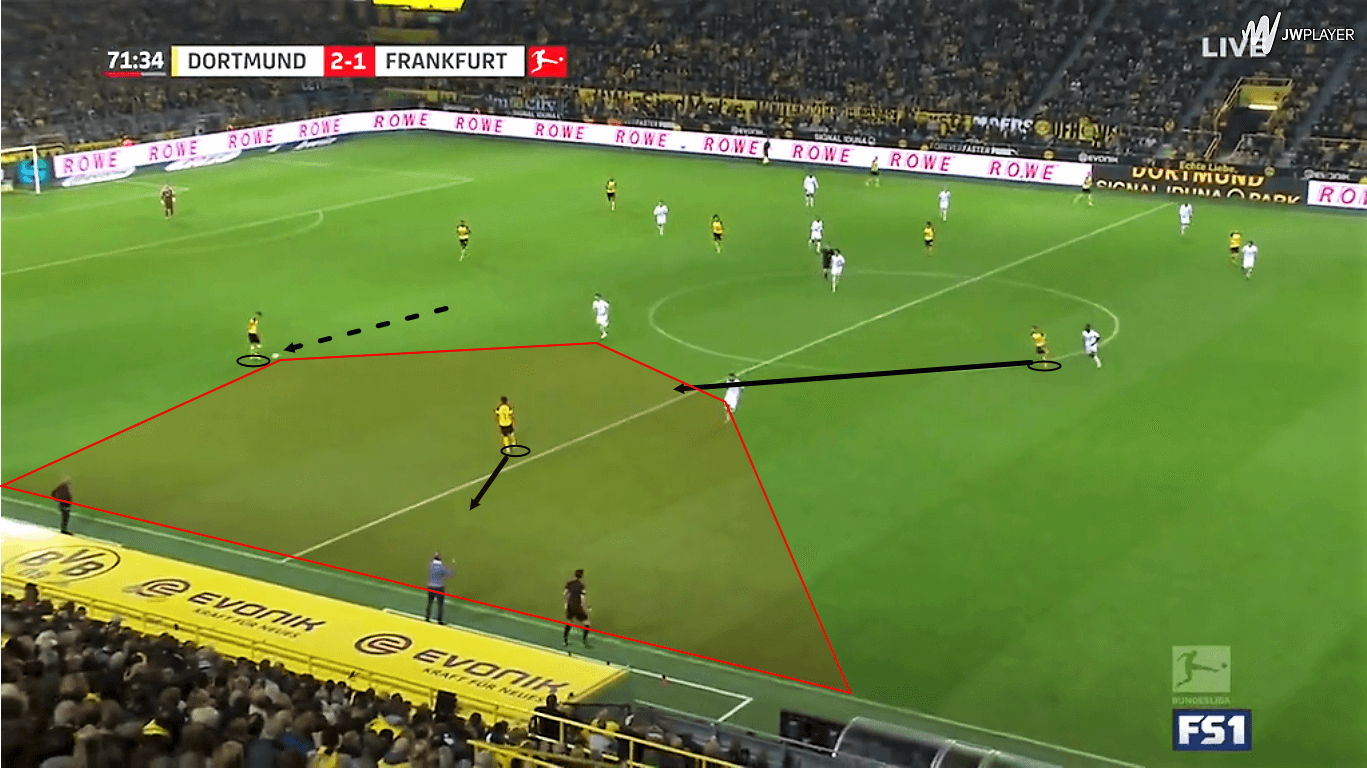
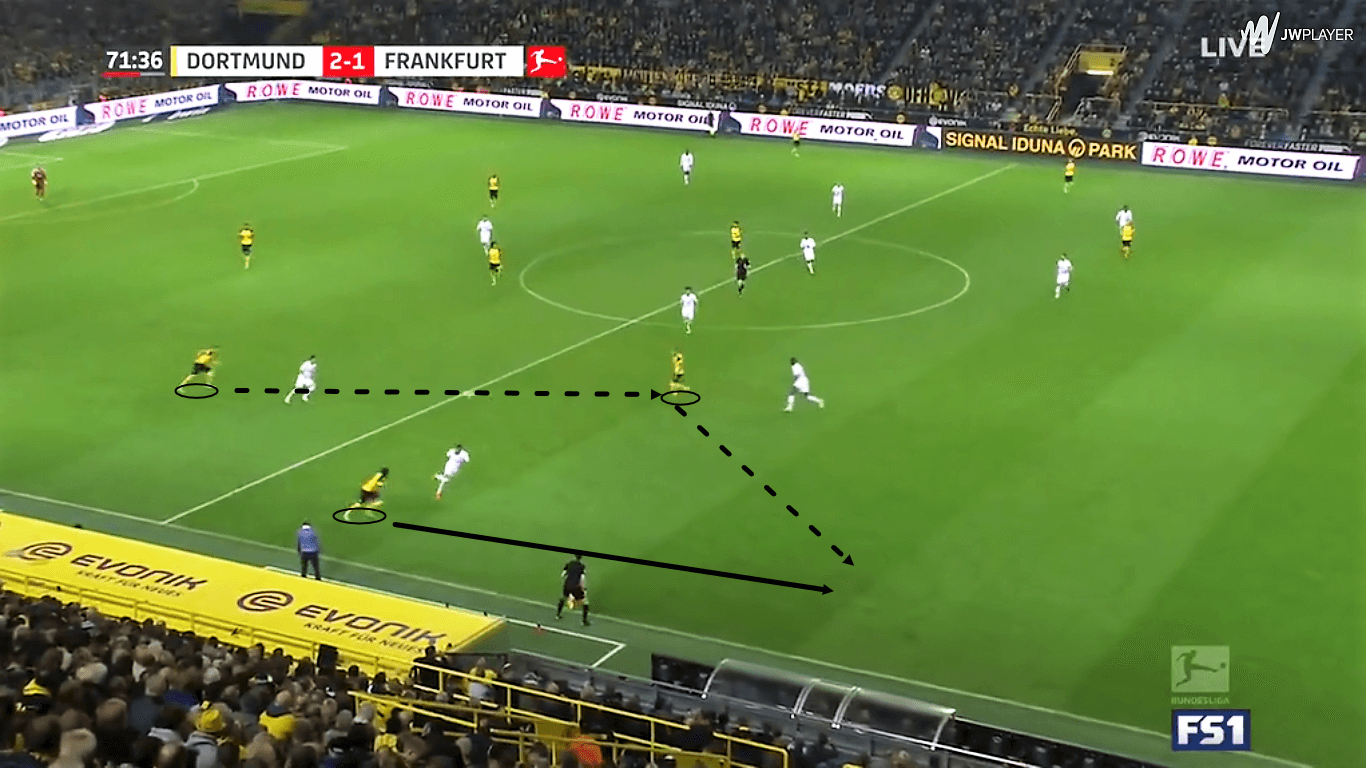
The movement of the ball, the switch of play, and the creation of overloads and one-on-ones have all been instrumental in opening up space ahead for Dortmund’s attackers. With quality wingers like Marco Reus, Christian Pulisic, and more recently, Jacob Bruun Larsen, Marius Wolf, and Sancho, this tactic has been extremely successful. It has even led to the Swiss manager positioning Reus centrally, similar to the way Raheem Sterling at Manchester City and Neymar at Paris Saint-Germain have been positioned at times this season.
How Jadon Sancho Helps Dortmund
This, of course, isn’t to say Jadon Sancho’s success is entirely accredited to Lucien Favre. The urban street-baller-turned-Bundesliga winger has been fruitful in this system due to his skilled ability on the ball and his discipline on the pitch.
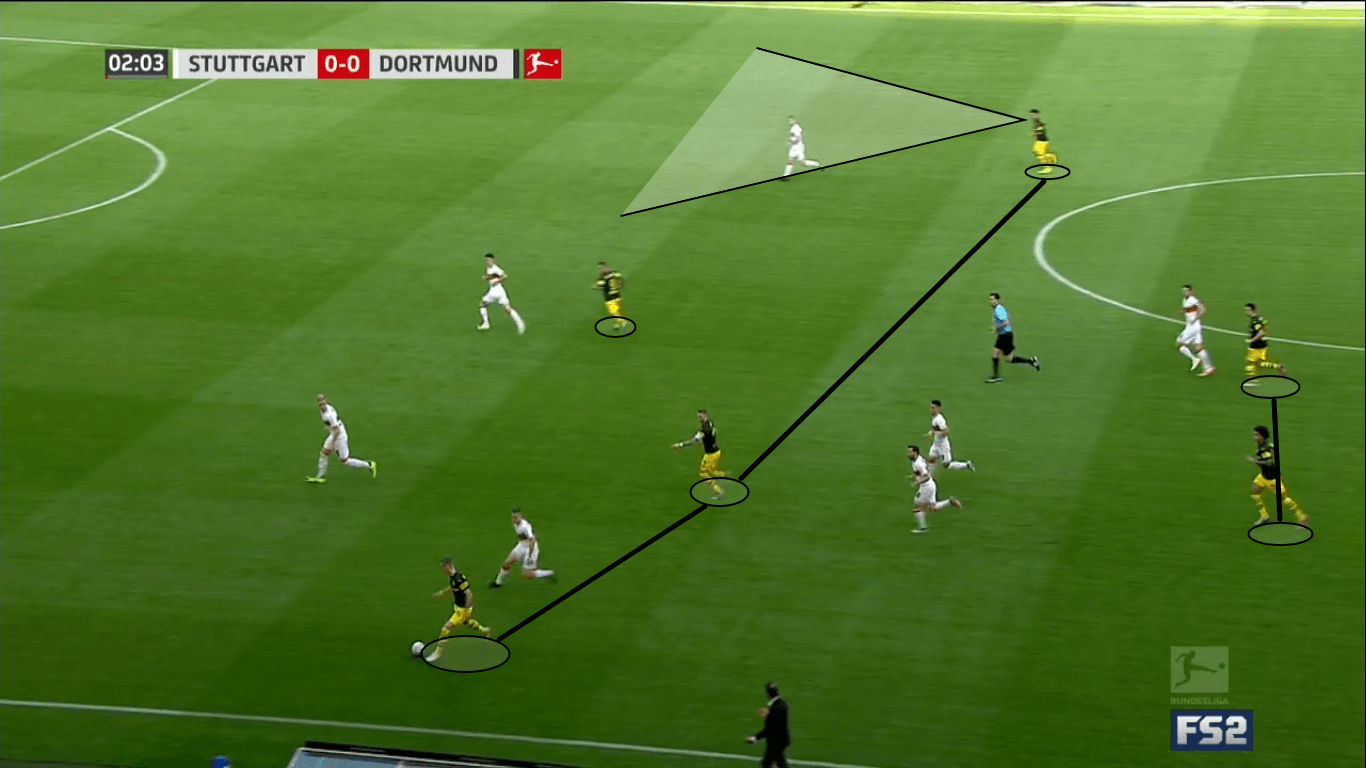
While the tactics have matched well with Jadon Sancho, the Englishman has grown popular among football fans for his creativity and ball control. His close-footed dribbling is extremely impressive in tight spaces, akin to Neymar or Manchester City’s Bernardo Silva, and he is very intelligent when passing the ball in the final third.
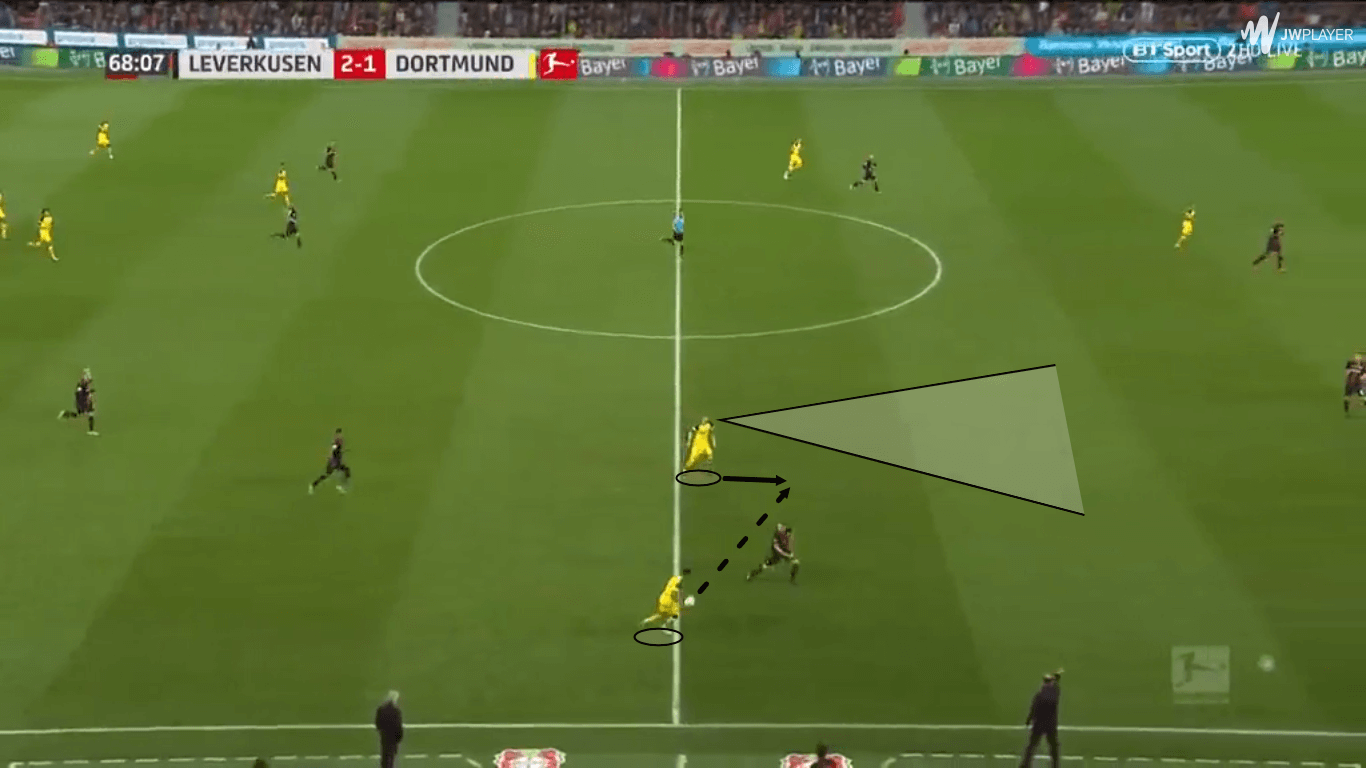
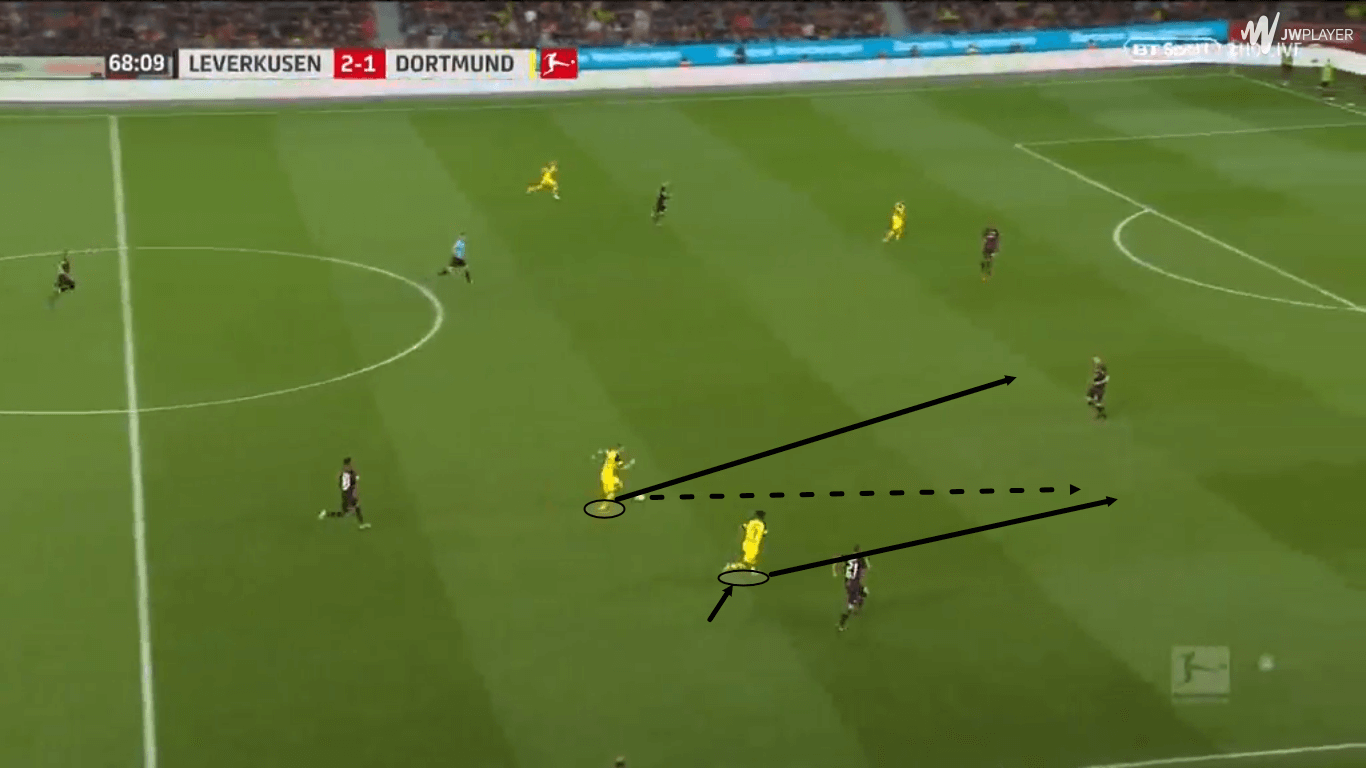
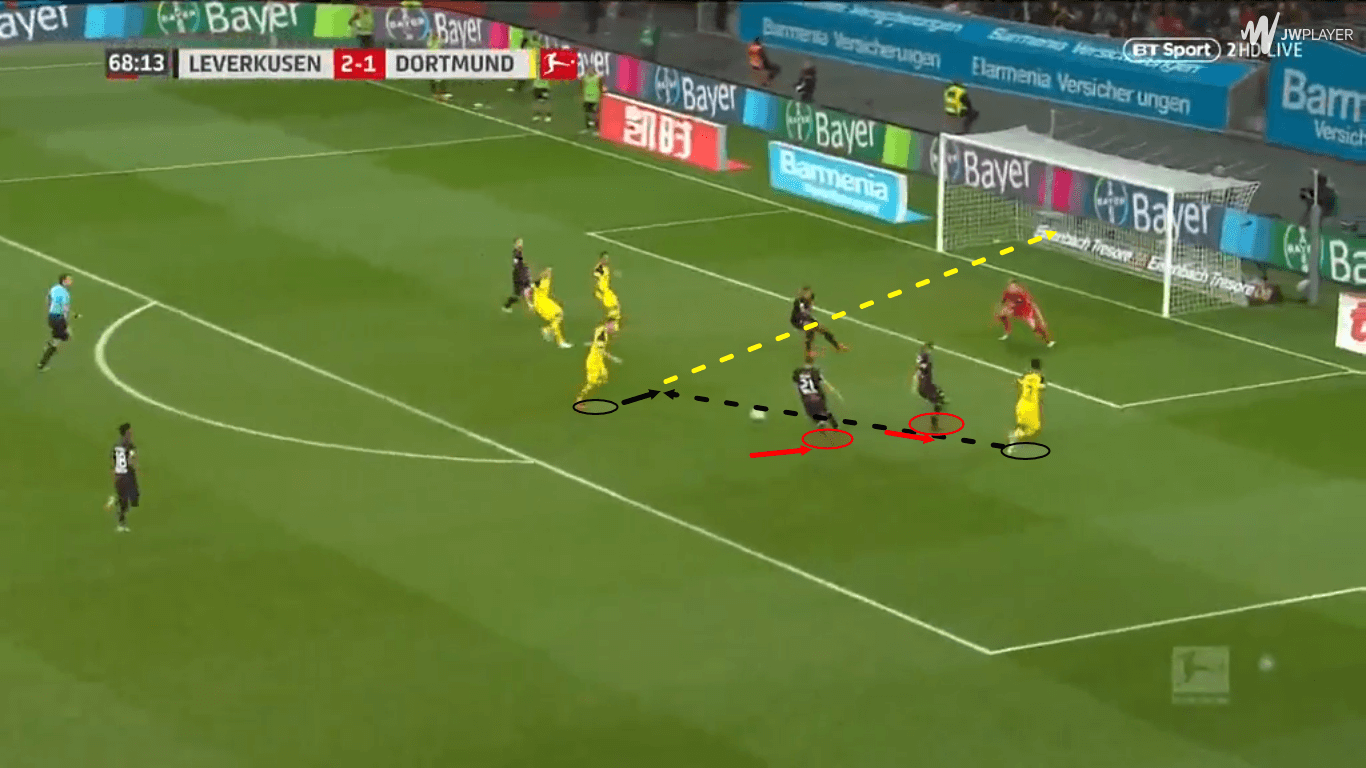
Through dedicated coaching of the system, however, Sancho has found even more ways to create for his teammates.
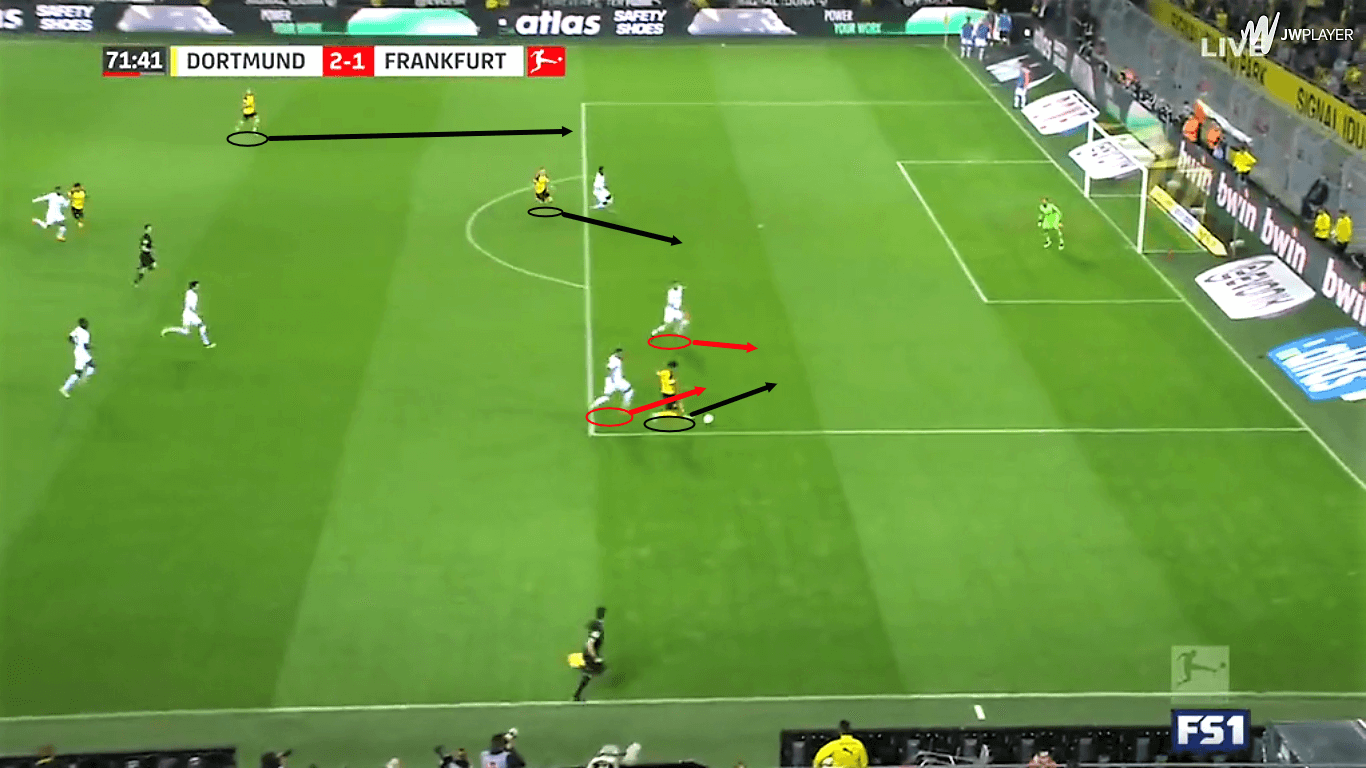
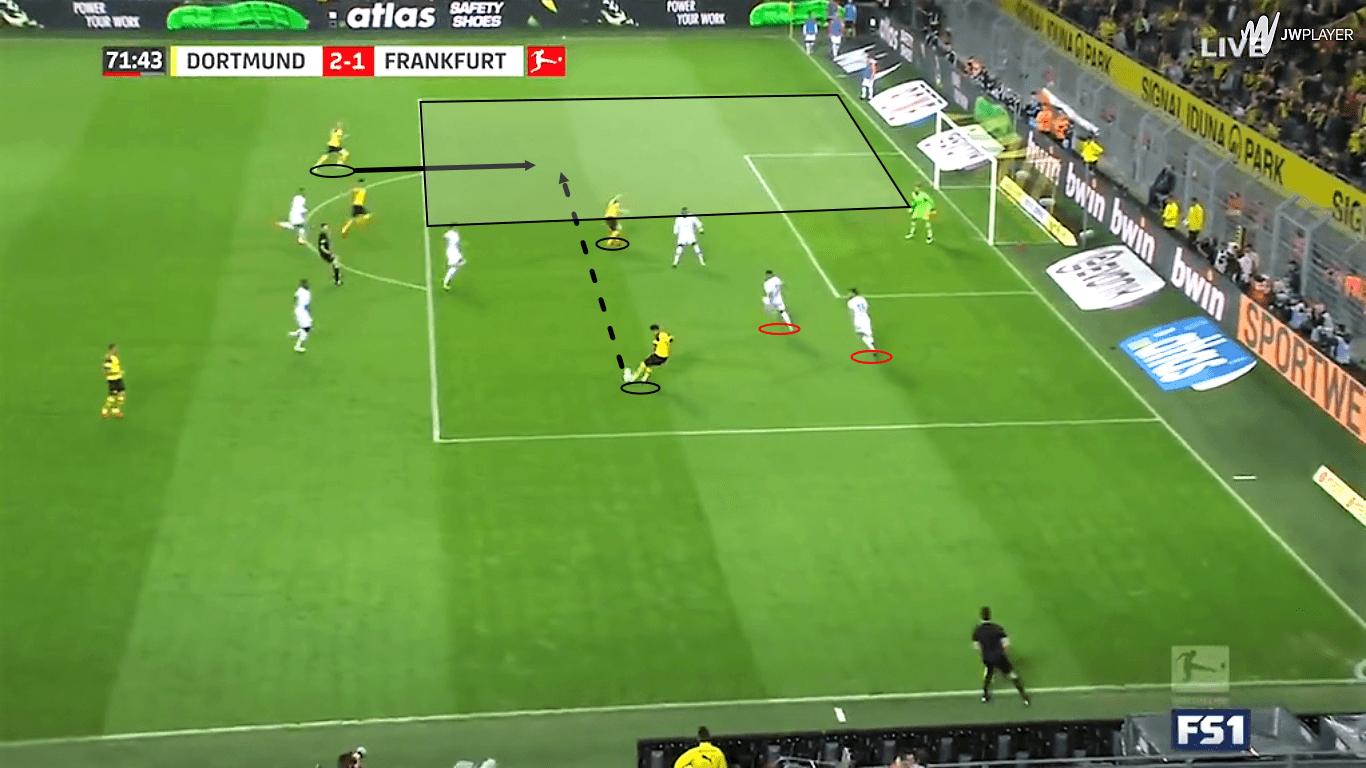
These skilled abilities all harken back to his childhood. The style of dribbling has come from his days playing in the small alleys of London. The tough neighbourhood he grew up in has gifted him a very strong mentality. An ego, but not one that will sacrifice the team’s goals for his own.
Some will consider it a smart decision to step away from the bright blue moon of Manchester City in an attempt to find playing time. Others will say it was only a matter of time before his skills broke through Pep Guardiola’s ranks.
Conclusion
Jadon Sancho has fit brilliantly in Lucien Favre’s system at Borussia Dortmund. His dribbling, energy, vision, and finishing skills at such an early age point to a promising future as a footballer. Yet it still feels more intricate than that. He has an uncharacteristic English flair, a penchant for creating the unexpected, and a distinguished chip on his shoulder.
The move beyond the shores of the United Kingdom was a brave one, and it has begun to pay off in spades. Multiple English youth players have traded the comforts of home for a spot on a German club; it would not be surprising if it came out that fellow Three Lions winger Reiss Nelson’s move, now on loan at Hoffenheim from Arsenal, was influenced by Sancho’s willingness to challenge the norm. As England have had a strong start to the new FIFA four-year cycle, manager Gareth Southgate would be remiss if he failed to include Jadon Sancho in the national team’s long-term future.

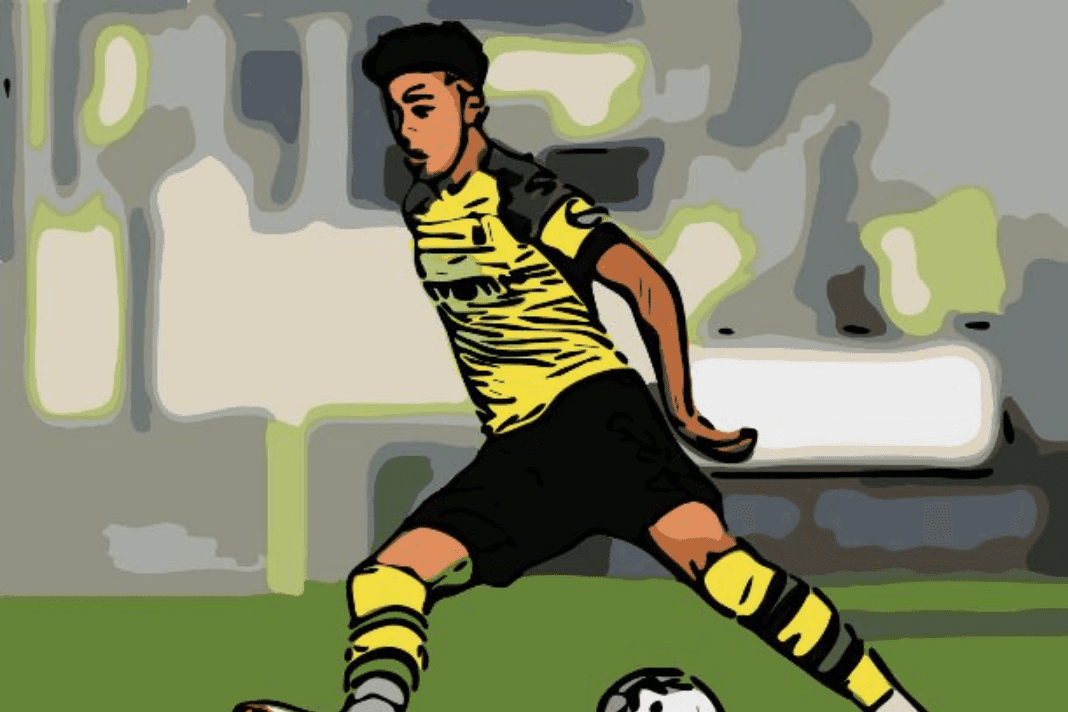



Comments